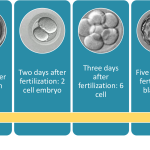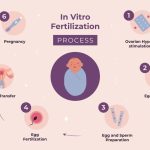What Is the Success Rate of IVF? Your Complete Guide to Understanding the Odds
In vitro fertilization (IVF) has become a beacon of hope for millions of people dreaming of starting a family. If you’re reading this, chances are you’ve wondered about its success rate—how likely is it to work for you? It’s a big question, and the answer isn’t as simple as a single number. IVF success depends on so many factors, from age to lifestyle, and even the clinic you choose. But don’t worry—I’m here to break it all down for you in a way that’s easy to grasp, with the latest info, real stories, and practical tips to boost your chances.
Picture this: IVF is like planting a garden. You’ve got seeds (eggs and sperm), soil (your body), and a gardener (your doctor). How well everything grows depends on the quality of those seeds, how rich the soil is, and how skilled the gardener is. Let’s dig into the details and explore what makes IVF bloom—or sometimes, why it doesn’t.
Why IVF Success Rates Matter to You
IVF isn’t just a medical procedure; it’s a journey filled with hope, effort, and sometimes heartbreak. Knowing the success rate helps you set expectations and plan ahead. The good news? IVF has come a long way since the first “test-tube baby,” Louise Brown, was born in 1978. Today, it’s responsible for about 2.5% of all babies born in the U.S. each year—that’s nearly 92,000 little miracles in 2022 alone!
But here’s the catch: success isn’t guaranteed. On average, about 1 in 3 IVF cycles leads to a baby, but that number shifts depending on your unique situation. So, what’s the real story behind those odds? Let’s start with the basics and build from there.
How Is IVF Success Measured?
When people talk about “success” in IVF, they usually mean a live birth—a healthy baby you can hold in your arms. But clinics and studies sometimes use different milestones, like a positive pregnancy test or an embryo implanting in the uterus. For you, the live birth rate is what matters most, and that’s what we’ll focus on here.
The Centers for Disease Control and Prevention (CDC) tracks IVF success across the U.S., collecting data from fertility clinics every year. According to their 2020 report (the latest detailed stats available as of April 2025), the national average live birth rate for women under 35 is about 55% per egg retrieval cycle. That’s pretty encouraging! But as age goes up, the odds dip—down to 8% for women over 40. These numbers give us a starting point, but they’re just averages. Your story might be different, and we’ll explore why.
What Affects IVF Success Rates?
Think of IVF success as a puzzle with lots of pieces. Some you can control, some you can’t. Here’s a rundown of the biggest factors that shape your chances.
Age: The Biggest Player
Age is the MVP when it comes to IVF success. Why? Because your eggs age with you. Women are born with all the eggs they’ll ever have—about a million at birth, dropping to 200,000 by their 20s. By 35, both the number and quality of eggs start to decline faster. For men, sperm quality can dip with age too, though it’s less dramatic.
Here’s what the numbers look like, based on CDC data:
- Under 35: 55% live birth rate per cycle
- 35-37: 41% live birth rate
- 38-40: 26% live birth rate
- Over 40: 8% live birth rate
So, if you’re 32 and your partner’s 34, your odds are solid. But if you’re 39, it might take more tries—or a different approach, like donor eggs. Age isn’t just a number here; it’s biology at work.
Your Health and Fertility History
Your body’s health is like the soil in our garden analogy. Conditions like endometriosis, polycystic ovary syndrome (PCOS), or low ovarian reserve (fewer eggs than average) can make IVF trickier. For men, low sperm count or poor motility (how well sperm swim) can lower the odds too.
If you’ve had a baby before, your chances might be higher—about 37% for women under 35 with a prior birth, compared to 32% for first-timers. On the flip side, multiple miscarriages or failed IVF cycles could signal underlying issues your doctor needs to tackle.
Lifestyle Choices That Tip the Scales
You might not think your daily habits matter, but they do! Studies show that smoking, heavy drinking, and even too much coffee can hurt IVF success. For example, women who smoke often have fewer eggs retrieved and lower pregnancy rates. Obesity or being underweight can mess with hormone levels too, making it harder for embryos to implant.
✔️ Do This: Eat a balanced diet, exercise moderately, and cut back on caffeine (aim for less than 2 cups of coffee a day).
❌ Skip This: Smoking, binge drinking, or crash diets right before IVF.
The Clinic and Technology
Not all fertility clinics are created equal. A top-notch clinic with skilled doctors and cutting-edge tech—like time-lapse imaging to monitor embryos—can boost your odds. The Society for Assisted Reproductive Technology (SART) reports live birth rates varying from under 10% to over 60% for women under 35, depending on the clinic. That’s a huge gap!
Breaking Down the Numbers: A Closer Look
Let’s put those stats into perspective with a simple table based on 2020 CDC data. This shows the live birth rate per egg retrieval cycle, using your own eggs and your partner’s sperm:
| Age Group | Live Birth Rate | What It Means for You |
|---|---|---|
| Under 35 | 55% | Over half of cycles lead to a baby |
| 35-37 | 41% | Still good, but declining slightly |
| 38-40 | 26% | About 1 in 4 cycles succeed |
| Over 40 | 8% | Tougher odds, but not impossible |
These are national averages, so your clinic’s results might be higher (or lower). Want to check? The CDC’s IVF Success Estimator tool lets you plug in your age, height, weight, and fertility history for a personalized estimate. It’s free and super handy!
The IVF Process: Why It’s Not a Sure Thing
IVF isn’t a magic wand—it’s a complex dance of science and timing. Here’s a quick rundown of the steps and where things can go off track:
- Stimulation: You take meds to grow multiple eggs. If your ovaries don’t respond well, you might not get enough eggs.
- Egg Retrieval: Doctors collect the eggs. Sometimes, they’re not mature enough to fertilize.
- Fertilization: Eggs meet sperm in the lab. If sperm quality’s low, fertilization can fail.
- Embryo Growth: Embryos need to develop for 3-5 days. About 40% stop growing before transfer (called embryonic arrest).
- Transfer: An embryo is placed in your uterus. Even healthy embryos don’t always implant—only 25-30% do per cycle, per the American Society for Reproductive Medicine (ASRM).
Each step is a hurdle, and that’s why multiple cycles are often needed. But don’t lose hope—science is finding ways to improve every stage.
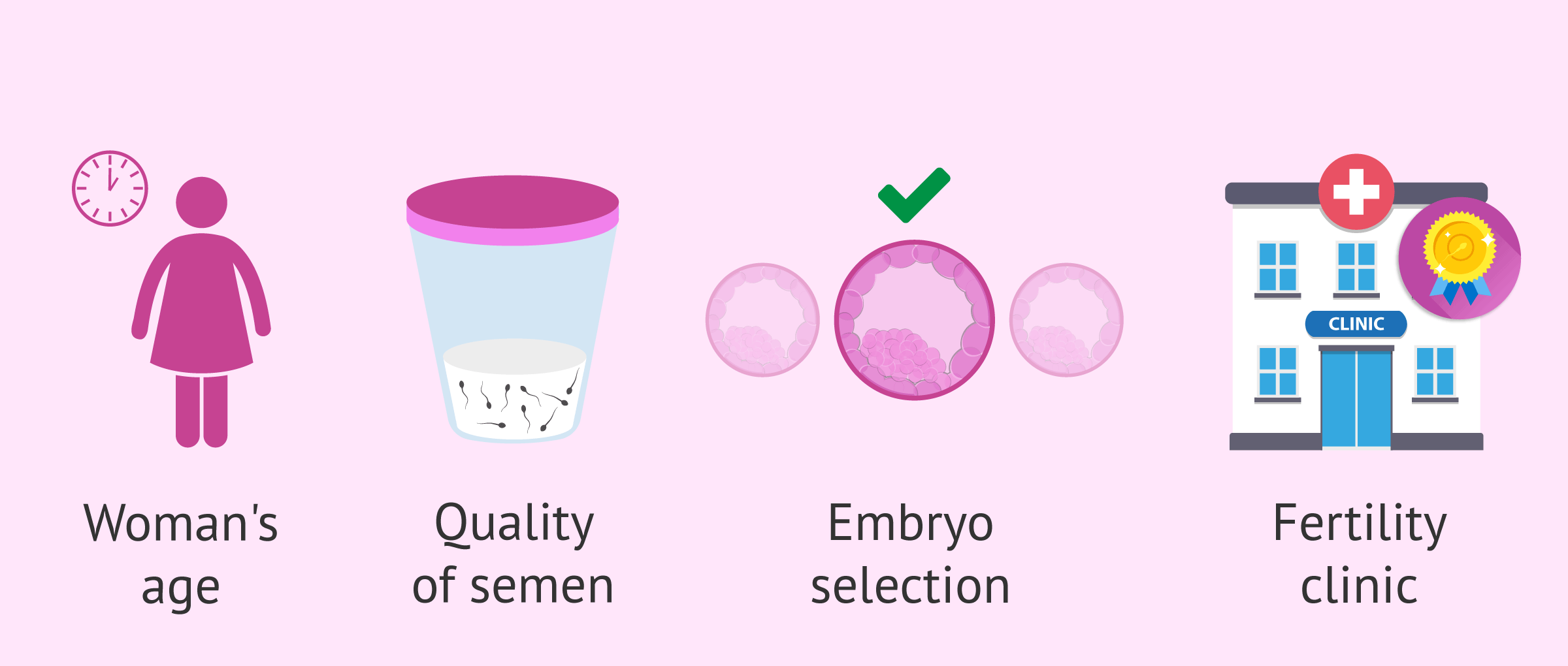
Fresh vs. Frozen: Does It Make a Difference?
Here’s something you might not have thought about: embryos can be transferred fresh (right after retrieval) or frozen for later. Which is better? It depends.
- Fresh Transfers: Used to be the go-to, but success rates hover around 40-50% for women under 35.
- Frozen Transfers: Gaining popularity, with rates closer to 55% in younger women. Freezing lets your body recover from stimulation meds, and doctors can pick the perfect moment for transfer.
A 2021 study found frozen transfers slightly edge out fresh ones for live births, especially if you freeze all embryos and transfer later. It’s like putting your best seeds on ice until the soil’s just right!
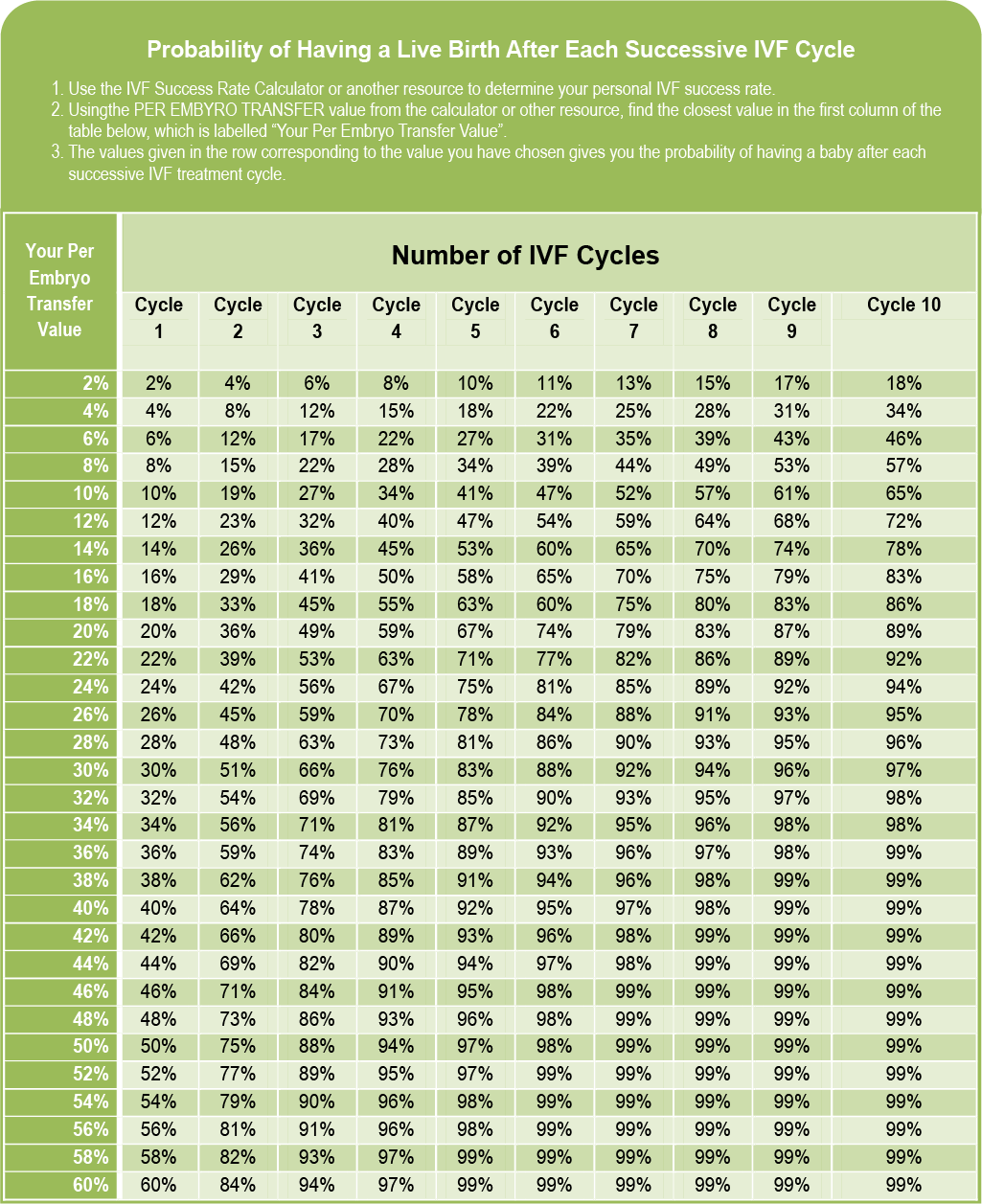
Real Stories: What Success Looks Like
Numbers are great, but stories bring them to life. Meet Sarah, a 34-year-old teacher from Ohio. After two years of trying naturally, she and her husband turned to IVF. Their first cycle failed—zero embryos made it to transfer. “It was crushing,” she says. But their clinic adjusted her meds, and the second cycle worked. Today, they have a 2-year-old son. “It wasn’t easy, but it was worth it.”
Then there’s Maria, 41, from California. She used donor eggs after three failed cycles with her own. “I had to let go of the idea of a biological connection,” she admits. Her first donor cycle succeeded, and she’s now mom to twins. These stories show that success isn’t one-size-fits-all—it’s about finding your path.
Boosting Your Odds: Practical Tips You Can Use
You can’t change your age, but you can tilt the odds in your favor. Here are some science-backed tips to try before and during IVF:
Optimize Your Health
- Sleep: Aim for 7-9 hours a night. Poor sleep messes with hormones like cortisol, which can affect egg quality.
- Stress Less: Yoga or meditation can lower stress hormones. A 2022 study linked high stress to lower IVF success in women over 35.
- Supplements: Folic acid (500mg daily) is a must, and CoQ10 might improve egg quality (check with your doctor).
Pick the Right Clinic
- Ask for their live birth rates for your age group.
- Look for clinics using blastocyst transfers (day 5 embryos)—they often have higher success rates.
- Check if they offer genetic testing (PGT) to screen embryos for abnormalities.
Timing Matters
- If you’re over 38, consider freezing eggs or embryos now, even if you’re not ready for a baby yet. It locks in your current egg quality.
- For men, avoid hot tubs and tight underwear—heat can hurt sperm motility.
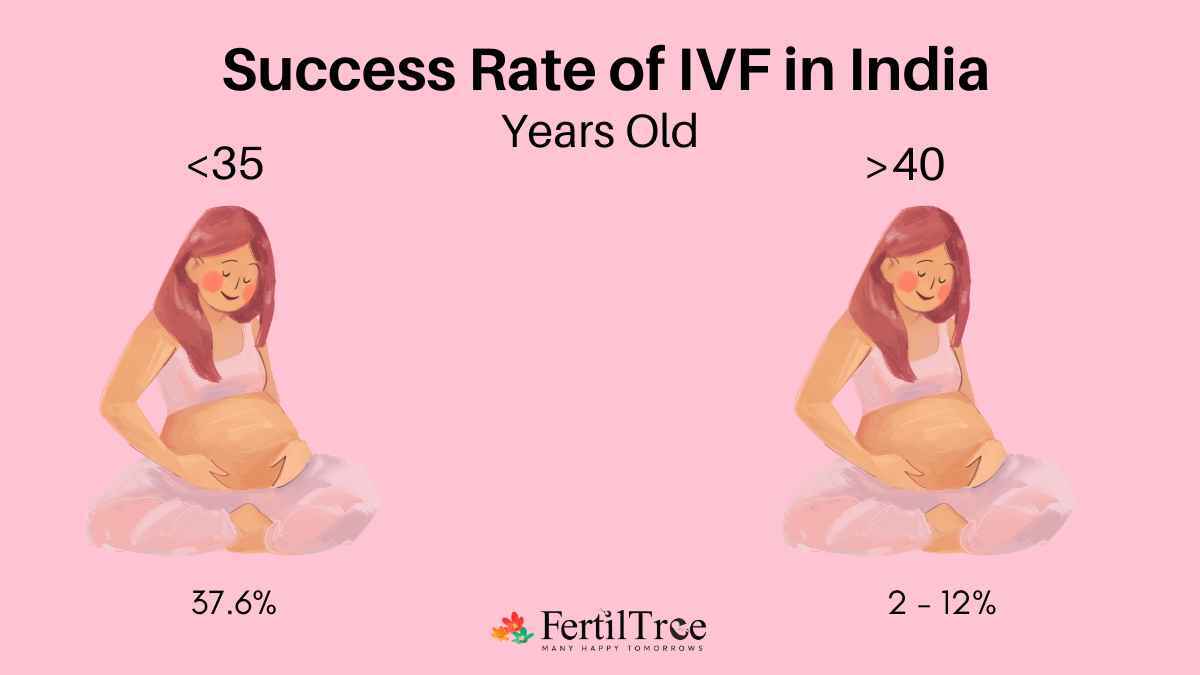
Interactive Quiz: What’s Your IVF Knowledge?
Let’s take a quick break—test your smarts with this mini-quiz! Answer yes or no, then check below.
- Does age affect IVF success more than anything else?
- Can smoking lower your IVF chances?
- Is a 100% success rate possible with IVF?
Answers: 1. Yes 2. Yes 3. No. How’d you do? Even if you aced it, stick around—there’s more to learn!
The Emotional Side: What Stats Don’t Tell You
IVF isn’t just about numbers—it’s an emotional rollercoaster. About 1 in 5 couples drop out after a failed cycle, often due to stress or lack of support. If a cycle doesn’t work, it’s normal to feel disappointed, but don’t give up too soon. Research shows that after three cycles, your cumulative success rate can hit 60-70% for women under 35.
Try joining a support group—virtual ones like Resolve’s IVF circles are free and full of people who get it. Sarah, from our earlier story, says, “Talking to others kept me sane. I wasn’t alone.”
New Frontiers: What’s Boosting Success Rates Now?
Science isn’t standing still, and 2025 is bringing some cool advances that could change the game. Here are three cutting-edge ideas you won’t find in every article:
Microfluidics: The Tiny Tech Revolution
Imagine a chip smaller than a dime that sorts sperm like a pro, picking only the strongest swimmers. That’s microfluidics. A 2020 study showed it improved embryo quality, and clinics are starting to test it. It’s not everywhere yet, but it could mean fewer failed fertilizations.
AI-Powered Embryo Selection
Artificial intelligence is stepping in to pick the best embryos. Instead of relying solely on a doctor’s eye, AI analyzes thousands of embryo images to predict which ones are most likely to implant. A 2023 trial found it bumped success rates by 10% in women over 37. It’s like having a super-smart assistant in the lab!
Bioprosthetic Ovaries
For women with low egg counts, 3DShelving this sounds wild, but researchers are testing 3D-printed ovary scaffolds that mimic real ovaries, helping grow healthy eggs. A 2021 study showed better hormone levels in mice, and human trials are next. It’s years away, but it could be a game-changer for older women.
When IVF Doesn’t Work: What’s Next?
Sometimes, IVF doesn’t lead to a baby, even after multiple tries. If you’re hitting a wall, here are options to consider:
- Donor Eggs or Sperm: Success rates jump to 50-60% per cycle, even for women over 40.
- Gestational Carrier: Someone else carries your embryo. It’s pricey but effective if your uterus is the issue.
- Adoption: Not IVF, but a beautiful way to grow your family.
Maria’s twins came from donor eggs, and she says, “It wasn’t Plan A, but it’s my Plan Perfect.”
Your IVF Action Plan: Steps to Take Today
Ready to dive in? Here’s a step-by-step guide to get started:
- Talk to a Specialist: Find a reproductive endocrinologist and ask about your odds.
- Run Tests: Check your ovarian reserve (AMH test) and your partner’s sperm quality.
- Research Clinics: Compare live birth rates on SART’s website.
- Prep Your Body: Start healthy habits now—every little bit helps.
- Plan Finances: IVF averages $15,000 per cycle, so look into insurance or grants.
Poll: What’s Your Biggest IVF Question?
We’re curious—what’s on your mind? Vote below, and we’ll cover the top pick in a future post!
- How can I afford IVF?
- What’s the best age to start?
- How do I pick a clinic?
- What if it fails?
Drop your vote in the comments—I’d love to hear from you!
The Bottom Line: Your Odds, Your Way
So, what’s the success rate of IVF? It’s about 55% for women under 35, dropping to 8% over 40, with tons of factors in between. But it’s not just stats—it’s your journey. Whether it’s tweaking your lifestyle, choosing the right clinic, or exploring new tech, you’ve got options to nudge those odds up.
Think of IVF as a marathon, not a sprint. It might take a few cycles, a detour, or a whole new path, but every step brings you closer to your goal. What’s your next move? Share your thoughts below—I’m rooting for you!

